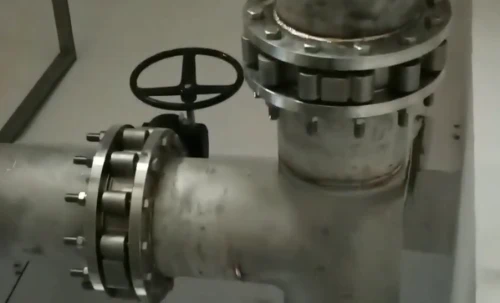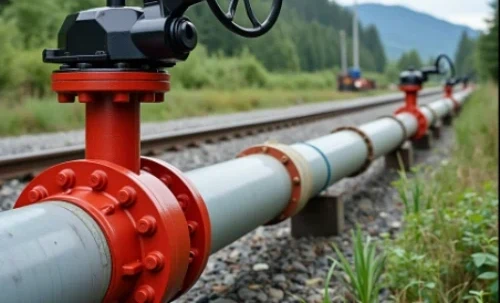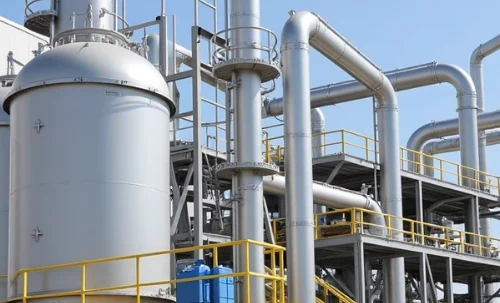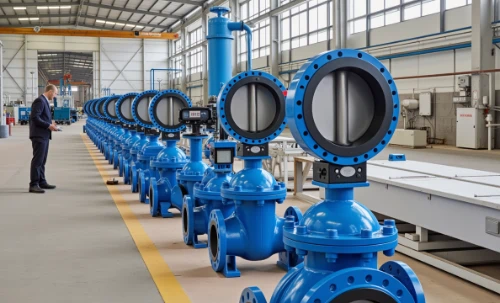1. Executive Summary
Core Engineering Distinctions of Butterfly Valves
- Concentric (Zero Offset) Butterfly Valve: The disc's center of rotation coincides with the center of the sealing face. Upon closing, the entire sealing face of the disc compresses against the seat. During opening, the entire sealing face "scrapes" along the seat surface as it rotates away. This results in high operating torque and severe frictional wear.
- Double Eccentric (Double Offset) Butterfly Valve: Due to the offset stem axis, the disc's rotational motion is "modified." As the disc begins to rotate from the closed position, its trajectory is no longer a simple "rotation" but is superimposed with a "radial displacement." This causes the disc's sealing edge to lift away from the seat in a radial direction (i.e., perpendicular to the sealing face) at the very start of rotation. Once the disc starts to rotate, contact pressure is immediately eliminated. Due to this lack of contact, there is no sliding friction between the disc and seat for over 90% of its travel. Friction only occurs during the final few degrees of closing as the disc "sits" back onto the seat.
- Triple Eccentric (Triple Offset) Butterfly Valve: Building on the double eccentric design, a third offset is introduced through the geometry of the sealing surfaces, which are machined into an offset cone. This design perfects the disc's motion, creating a true "wedging" action. Consequently, the sealing surfaces make contact only at the final moment of closure, completely eliminating rubbing and friction throughout the entire 90-degree rotation. This zero-friction design enables a durable, bubble-tight seal with metal-to-metal components.
2. Double Offset
Many diagrams can be confusing because they mix up top-down and side views. Let's look at a horizontal cross-section (a top-down view). Imagine you are looking down into the pipe.
Offset 1: Hiding the Shaft "Behind" the Sealing Face
Purpose: To ensure the sealing ring is a complete, unbroken circle.
Without this offset, the valve shaft would have to pass directly through the sealing face (like in a concentric valve). This would require punching two holes in the seal for the shaft to go through, creating the most common leak paths. Offset 1 moves the shaft behind the seal, allowing the seal to be a complete, uninterrupted 360° ring.
Offset 2: Moving the Shaft "Away" from the Pipe's Center
Purpose: To create a lift-off and swing-away motion.
In a concentric (centerline) valve, the disc's axis of rotation, its geometric center, and the pipe's center are all the same. To achieve a seal, the disc's diameter must be slightly larger than the seat's inner diameter. As it closes the final few degrees, it's like forcing a large cork into a slightly smaller bottle neck. The sides of the disc have to forcibly scrape and squeeze against the seat until it "jams" into place to seal. Every time you open it, you need high torque to "unplug" the jammed disc, a process that causes severe and unavoidable wear on the seat. This is the friction we are talking about.
With Offset 2 in a double eccentric design, the axis of rotation is moved to the side of the pipe's center. Because the pivot point is off-center, the disc's movement is no longer a simple "spin-in-place" motion. Instead, it's an orbital path. As it begins to open, the entire disc follows an arc, shifting backward and inward. In the very first moment of opening, the entire edge of the disc lifts off the seat simultaneously and uniformly—there is no scraping at all! The closing action is just as smooth: it lands flatly on the seat at the very last moment, like a stamp hitting paper, rather than being "rubbed" into position.
Double Offset Principle (Top View)
Engineering StandardLook at the red arrow ("Lift Off"). Because the Shaft is offset (Offset 2), the disc moves in an arc. It pulls away from the seat immediately as it starts to open. This reduces friction in the middle areas of the disc.
When closing, the disc does not stop "before" the seat; it pushes into the seat. This compression (Interference Fit) creates the seal.
Double Offset: Friction Zones Mapping
The Cam Effect works perfectly here. The disc lifts off immediately.
Status: Zero Friction.
Near the shaft axis, the disc simply rotates. It cannot "lift off" because it is attached to the pivot.
Status: Sliding Friction (Needs Soft Seat).
Key Advantages of the Double Eccentric Design
This is the fundamental reason for choosing a double eccentric design, especially with a soft seat:
- Protects the Seat: Polymer materials (like PTFE or PEEK) provide excellent sealing but have far less wear and abrasion resistance than metal. The friction-free opening action maximally protects the soft seat, extending its service life by several, or even tens of times.
- Reduces Torque: Since it doesn't need to overcome high static and sliding friction, the required operating torque is very low. This allows for the use of smaller, more cost-effective actuators.
- Ensures Repeatable Sealing: By preventing the seat surface from being scratched or developing grooves, the design maintains its perfect sealing performance over the long term, ensuring reliable operation cycle after cycle.
3. Triple Offset
The "Third Offset" is not a shaft position, but a geometric modification of the sealing cone. The seat is machined as a tilted segment of a cone (Conical Section).
Geometry: The Conical Wedge
The 3rd Offset is not a shaft position, but a Seat Shape. The seat is machined as a tilted segment of a cone (elliptical profile). This creates a geometry where the sealing components do not touch until the final millimeter of travel.
Mechanics: Torque Seating
Unlike Double Offset valves that rely on seat elasticity, the Triple Offset acts like a Cork in a Wine Bottle. It is mechanically wedged into place using torque. This allows for zero-leakage Metal-to-Metal sealing without rubbing wear.
4. Manufacturing Complexity & Cost Drivers
The price differential (typically 2.0x to 2.5x) is not solely due to materials. It is dictated by the machining geometry required to achieve the seal.
Analysis: The geometry is rotationally symmetrical. Machining is automated, rapid, and repeatable using standard 2-axis or 3-axis equipment. Seat rings are mass-produced components.
Analysis: The seat is an angled slice of a cone (elliptical profile). This requires complex multi-axis CNC programming. Furthermore, the disc and seat often require manual lapping to achieve Class VI shutoff, significantly increasing labor hours.
5. Technical Specification Matrix
| Parameter | Double Offset | Triple Offset |
|---|---|---|
| Seat Material | Soft (PTFE, RTFE, PEEK) | Metal (Stellite, Duplex, Inconel) |
| Temp Range | -50°C to +260°C (Limit of PTFE) | -196°C to +800°C (Limit of Metal) |
| Fire Safety | Requires Fire-Safe Design (API 607) | Inherently Fire Safe (All Metal) |
| Leakage Class | Class VI (Bubble Tight) - Easy | Class VI (Bubble Tight) - Difficult |
6. Operational Failure Analysis
Triple Offset geometry is often misapplied in media containing solids. The following scenarios demonstrate where simplified geometry outperforms complex geometry.
Scenario A: Abrasive Slurries & Catalyst Fines
Triple Offset Failure Mode
The TOV relies on a pristine metal-to-metal interface. Particulates trapped between the laminations or the seating cone create high localized stress, leading to galling and scoring. Once the metal cone is scratched, the seal is permanently compromised.
Double Offset Mechanism
Soft Seat Encapsulation: Polymer seats can deform around minor particulates without sustaining permanent damage.
Wiping Action: The cam trajectory allows the disc to "wipe" the seat face clean during the final degrees of closure, preventing particle entrapment.
Scenario B: Crystallizing Media / Scaling
Triple Offset Failure Mode
The Triple Offset relies on a perfect "Wedge" fit. If a layer of scale (sugar, salt, lime) builds up on the seat, the disc cannot wedge in fully. The valve will leak or get stuck.
Double Offset: The "Icebreaker"
Shear Breakout: The Double Offset disc rotates with a shearing force. Upon opening, it acts like an Icebreaker, twisting and fracturing the crystalline crust or scale layers to force itself open.
Scenario C: Extreme Thermal Transients (>260°C) & Cryogenic
Double Offset Limitation (Physics of Polymers)
Thermal Creep: Above 260°C, even reinforced PTFE loses mechanical memory (Creep). The seat deforms permanently, losing its sealing stress.
Cold Flow: In Cryogenic service (<-50°C), polymers become brittle and shatter under stress. They cannot handle the phase changes of the media.
Triple Offset Necessity (Physics of Metals)
Isotropic Expansion: The all-metal construction allows the disc and seat to expand and contract at similar rates.
No Phase Change: Metal retains its ductility and hardness across the -196°C to 800°C range, maintaining the "Wedge" geometry without material degradation.
Scenario D: Strict Fire Safety (API 607 / ISO 10497)
Double Offset "Fire-Safe" Design
Requires a complex "Soft Seat + Metal Backup" ring. In a fire, the soft seat burns away, and the line pressure pushes the disc into a secondary metal lip. Risk: It is a reactive mechanism; the primary seal must be destroyed to activate the backup.
Triple Offset "Inherently" Fire Safe
Zero Combustibles: There are no soft components to burn. The valve maintains its standard sealing integrity before, during, and after a fire event.
Compliance: It meets API 607 requirements by design geometry, not by sacrificial components.
Surviving 550°C Molten Salt
In a Concentrated Solar Power (CSP) plant, valves must handle molten nitrates at 550°C. Standard Double Offset valves failed within weeks due to seat deformation and thermal expansion seizing.
The Triple Offset Solution: By switching to a TOV with a solid Stellite seal, the plant achieved:
Zero Leakage
Maintained Class VI shutoff despite the extreme thermal shock.
No Jamming
The "Wedging" action prevents the disc from getting stuck even when metal expands.
8. Selection Logic: The Decision Tree
Follow this three-step analysis to determine the correct geometry for your application.
Step 1: Temperature & Fire Constraints
Is the temperature > 260°C (500°F) OR is the media Cryogenic (< -50°C)?
Does the plant require API 607 Fire Safe certification (inherently)?
YES → Triple Offset is Mandatory.
(Polymer seats usually cannot survive these conditions reliably.)
Step 2: Media Cleanliness (If Step 1 is NO)
Does the media contain solids, slurry, catalyst fines, or crystallizing salts?
YES → Double Offset is Preferred.
(The "Wiping" action of the soft seat handles particles better than the "Wedging" metal seat, which can suffer from galling/locking.)
Step 3: Total Cost of Ownership
If the application is clean water, air, steam, or fuel < 260°C:
Select Double Offset.
(Double Offset valves typically cost 50% less than Triple Offset and have cheaper, replaceable spare parts.)

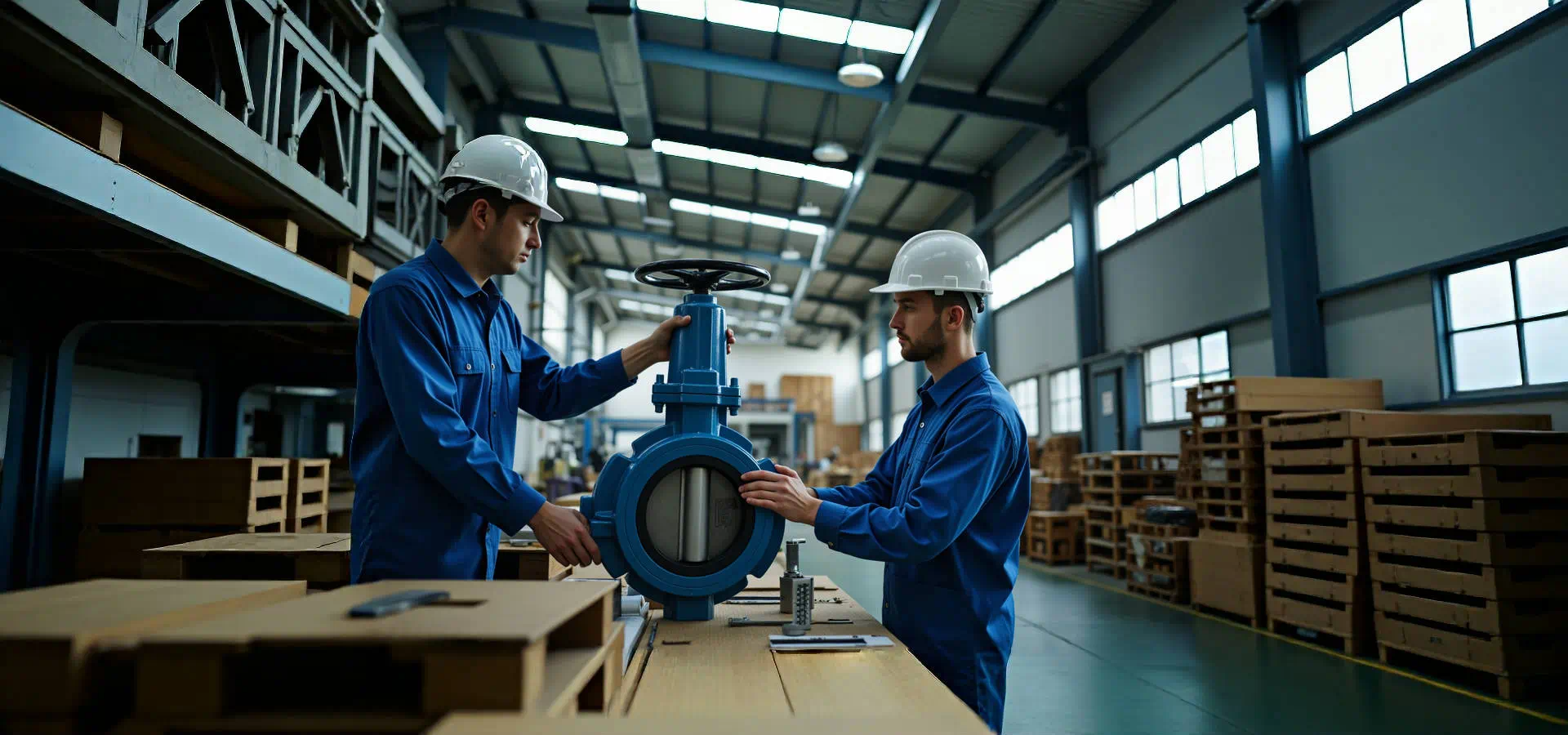
 JRVAL
JRVAL Feb 25 2025
Feb 25 2025